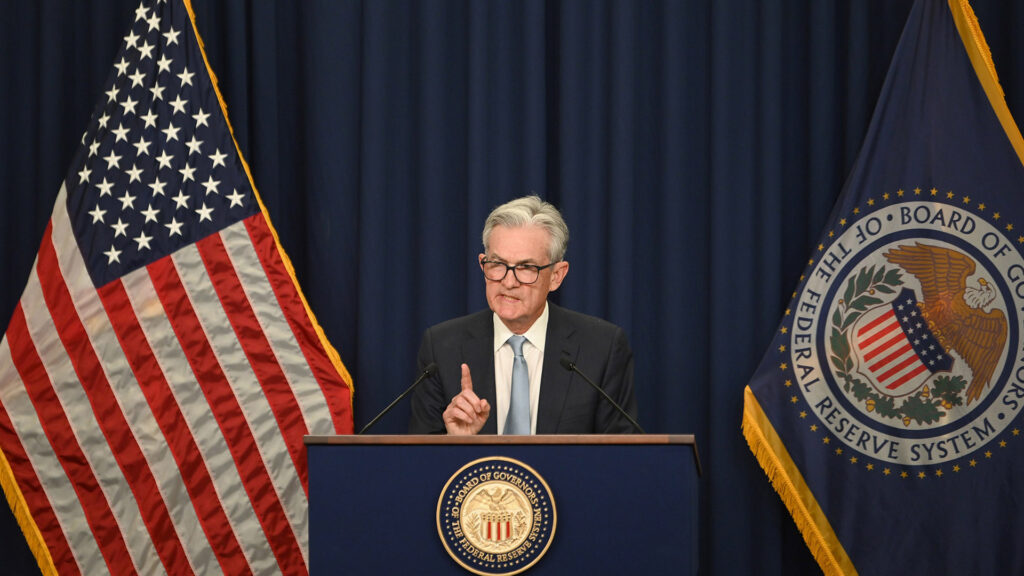For the first time since the pandemic’s onset, the Federal Reserve is cutting interest rates, signaling a notable shift in monetary policy.
On Wednesday, the Fed reduced its key interest rate by 50 basis points, dropping it to a range of 4.75% to 5%. This decision aims to address growing concerns about economic fragility and rising unemployment, following more than a year of sustained high rates meant to combat inflation.
Highlights
- Key Decision: The Federal Reserve has cut its key interest rate by 50 basis points, marking the first reduction since March 2020.
- Objective: Lowering borrowing costs to stimulate economic activity amid concerns about rising unemployment.
- Inflation Outlook: Inflation is nearing the Fed’s target of 2%, justifying a more aggressive rate cut to protect the job market.
- Future Projections: Fed officials anticipate further cuts, totaling an additional 50 basis points in the next two meetings.
Fed’s Motivation for the Cut
After a prolonged period of high inflation, consumer prices have now stabilized, with annual inflation nearing the Fed’s 2% target. This gave policymakers confidence to shift focus from inflation control to supporting the job market.
While inflation has been successfully subdued, the job market has shown signs of weakening, with the unemployment rate rising to 4.2% in August, up from January’s 3.4%, which was a 50-year low. By lowering borrowing costs, the Fed aims to stimulate economic growth and prevent further job losses.
A More Aggressive Approach to Stimulus
The decision to implement a 50-basis-point cut instead of the debated 25-point reduction reflects the Fed’s recognition of greater risks to the labor market.
Fed Chair Jerome Powell noted that this more aggressive move was necessary given the job market’s slowdown and inflation nearing sustainable levels. The rate reduction will put downward pressure on mortgage, credit card, and auto loan rates, encouraging borrowing and spending, which should help bolster the economy.

The Fed’s Dual Mandate
The Fed’s dual mandate, which requires it to manage inflation and promote full employment, underpinned its decision. Over the past 18 months, efforts have primarily focused on controlling inflation, but recent job market indicators have shifted the Fed’s priorities.
Consumer prices rose 2.5% in August compared to the previous year, down significantly from 2022’s 9.1% inflation peak.
Dissent and Debate Within the Fed
Not all members of the Federal Open Market Committee (FOMC) were in agreement. Fed Governor Michelle Bowman voted against the 50-basis-point reduction, advocating for a more cautious 25-point cut.
Bowman’s dissent underscores the delicate balancing act that the Fed faces in managing inflation risks while preventing economic downturns. The committee’s decision marked the first non-unanimous vote since June 2022.

Industry Insights: Economic Policy and Market Reactions
The Federal Reserve’s move signals a new chapter in monetary policy, one focused more on protecting jobs and less on curbing inflation. For businesses, the rate cut could translate into lower borrowing costs, making it more feasible to take on new investments.
However, a more accommodative monetary stance could also reignite concerns about inflation over the long term, leading businesses to stay vigilant regarding future pricing pressures. Industries reliant on consumer financing, such as housing and auto manufacturing, are expected to benefit most from lower interest rates.
Market reactions to the Fed’s move have been relatively muted, though financial analysts are watching closely for further cuts and how they will influence economic growth. Many businesses and investors have priced in a future of lower rates, shifting their strategies accordingly.







